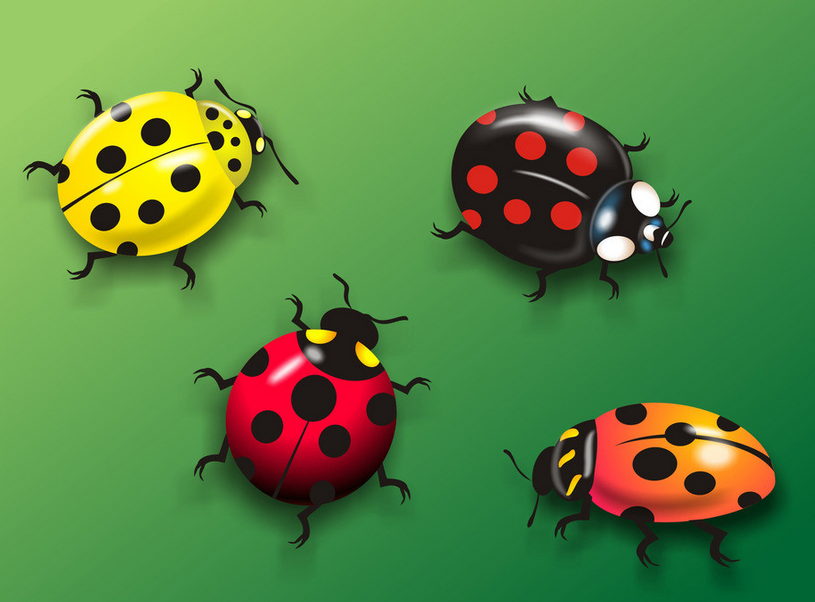Invasive Ladybird Has Biological Weapon. Nature May 16th,2013
配備有生化武器的侵略性瓢蟲 《自然》2013年5月16日
Ladybirds around the world are in danger from an invader that inadvertently wipes out its competitors using a biological weapon.
世界各地的瓢蟲都因為一個侵略者而處于危險之中。這個侵略者使用生物武器在不經意間就消滅了它的競爭對手。
The interloper is the harlequin ladybird (Harmonia axyridis), one of the world's most invasive insects. From its homelands in central Asia, H.axyridis was introduced to Europe and North America to control aphids. Since then, however, it has become a serious pest that has put native ladybird species under threat by outcompeting or even eating them.
這個侵略者就是異色瓢蟲,它是世界上最具攻擊性的昆蟲。異色瓢蟲來自中亞,為控制蚜蟲而被引入歐洲和北美。自那以后,它就因為戰勝本地瓢蟲物種或是吃掉它們而對本地瓢蟲造成了威脅,成為了害蟲。

Entomologist Andreas Vilcinskas of Justus-Liebig-University in Giessen, Germany, suggests that the harlequin's success partly hinges on the presence of a single-celled parasite that he and his colleagues found living inside the ladybirds. The parasite does no harm to the harlequin, but if it infects other ladybird species, such as the native seven-spot ladybird, it invariably kills them.
德國吉森尤斯圖斯-李比希大學的昆蟲學家安德列亞斯·威爾科林薩克斯認為,異色瓢蟲的勝利在于一種單細胞寄生蟲的出現。安德列亞斯·威爾科林薩克斯和他的同事們發現,這種寄生蟲可以存活于瓢蟲體內。它不會對異色瓢蟲造成傷害,但是卻會感染其他瓢蟲,例如本地的七星瓢蟲,并通常會殺死它們。
Some scientists had previously thought that the harlequin owed its success to haemolymph, a toxic antibacterial chemical found in its blood. Harmonine allows the harlequin to resist certain diseases and to poison native ladybirds that eat its eggs. However, Vilcinskas and his team found that high concentrations of harmonine do not kill seven- spot ladybirds—but a dose of the harlequin's haemolymph does. When Vilcinskas and his colleagues looked at the harlequin's haemolymph under a microscope, they found the culprit: a microsporidian parasite. These exist in the eggs and larvae of all harlequin ladybirds, but in a dormant and apparently harmless state.
先前,一些科學家認為,異色瓢蟲的勝利在于血淋巴。血淋巴指的是異色瓢蟲血液中有毒的抗菌化學物質。它可以使異色瓢蟲抵抗某些疾病,毒害吃它的卵的本地瓢蟲。但是,威爾科林薩克斯和他的同事們發現高濃度血淋巴并不會殺死七星瓢蟲,少量的血淋巴反而會殺死瓢蟲。之后,他們用顯微鏡觀察異色瓢蟲的血淋巴時發現了真兇:一種微孢子寄生蟲。這些寄生蟲可以在異色瓢蟲的卵和幼蟲中存活,且處于休眠和顯然的無害狀態。
Other ladybirds are not so lucky. Ladybirds often eat each other's eggs and larvae, so by consuming invading harlequins, native species could contract the fatal parasitic infection in the wild. And there could be other reasons for the harlequin's success. For example, it is highly resistant to a fungal disease that kills native species.
但是,其他的瓢蟲就沒有異色瓢蟲這么幸運了。瓢蟲經常會吃掉對方的卵和幼蟲。若是本地瓢蟲吃了具有侵略性的異色瓢蟲,它們就會在野外被致命的寄生蟲所感染。當然,異色瓢蟲的勝利還有其他的原因。比如,真菌疾病會殺死本地瓢蟲,但是,異色瓢蟲卻對真菌疾病有很強的抵抗力。












